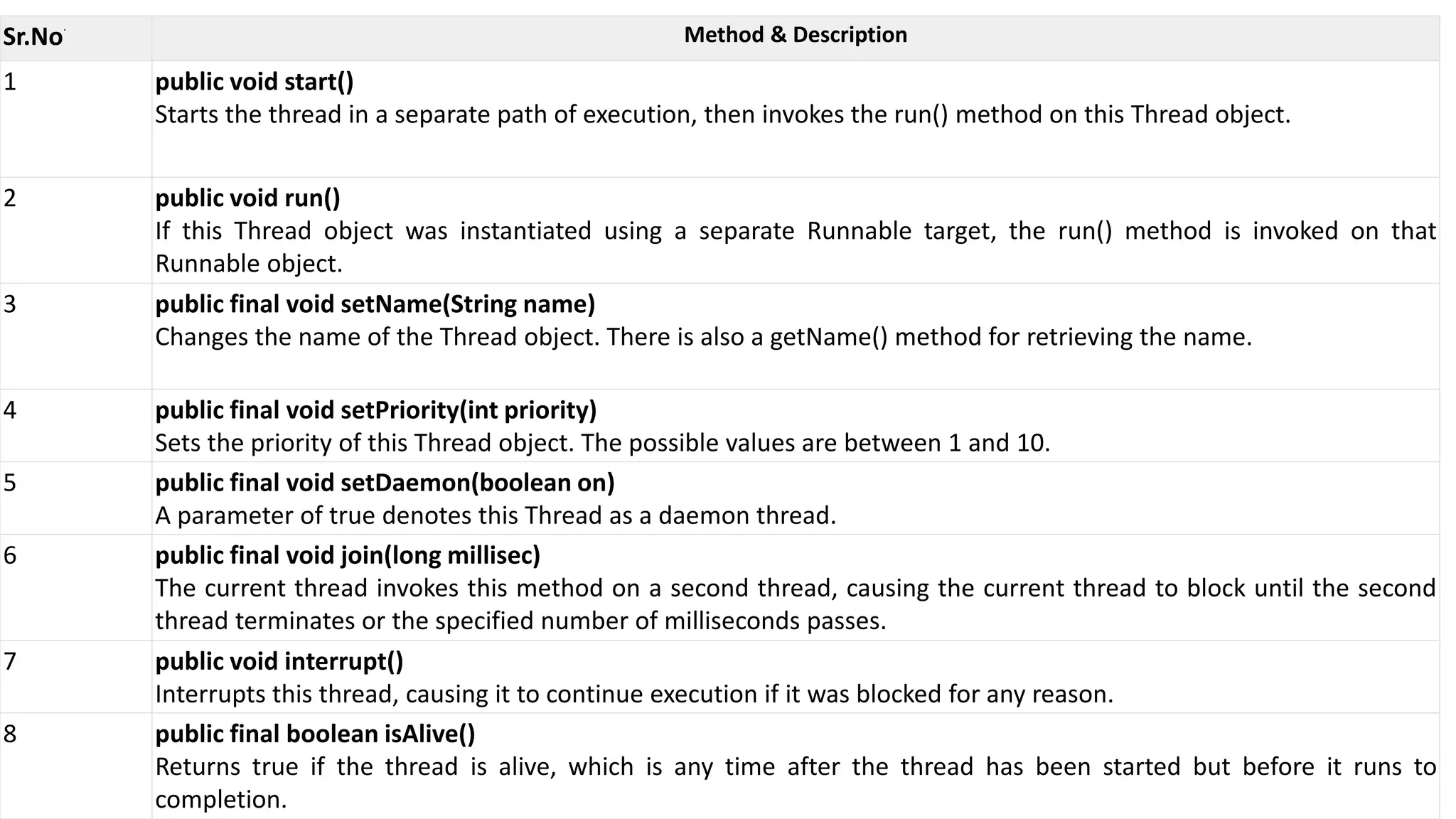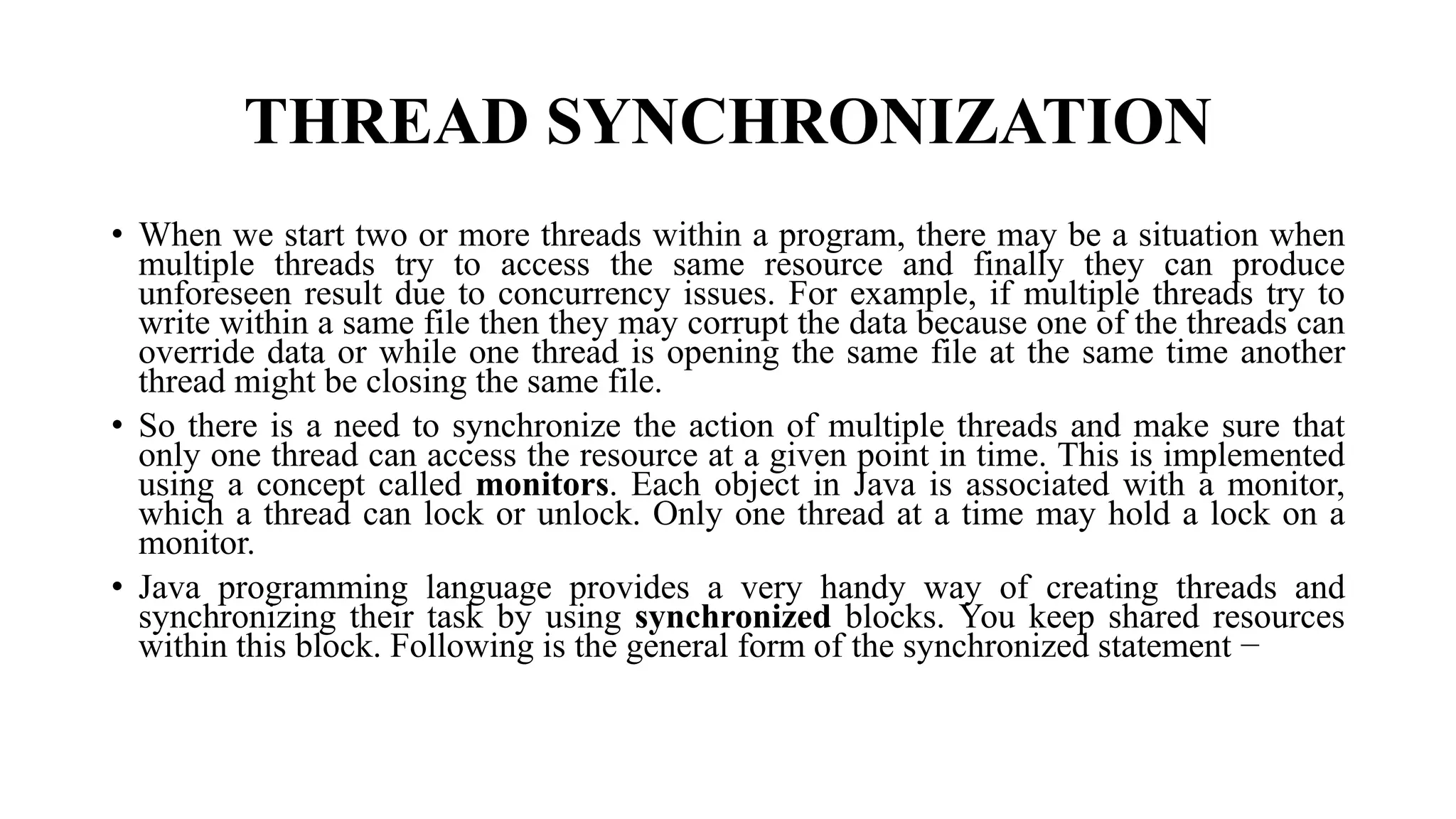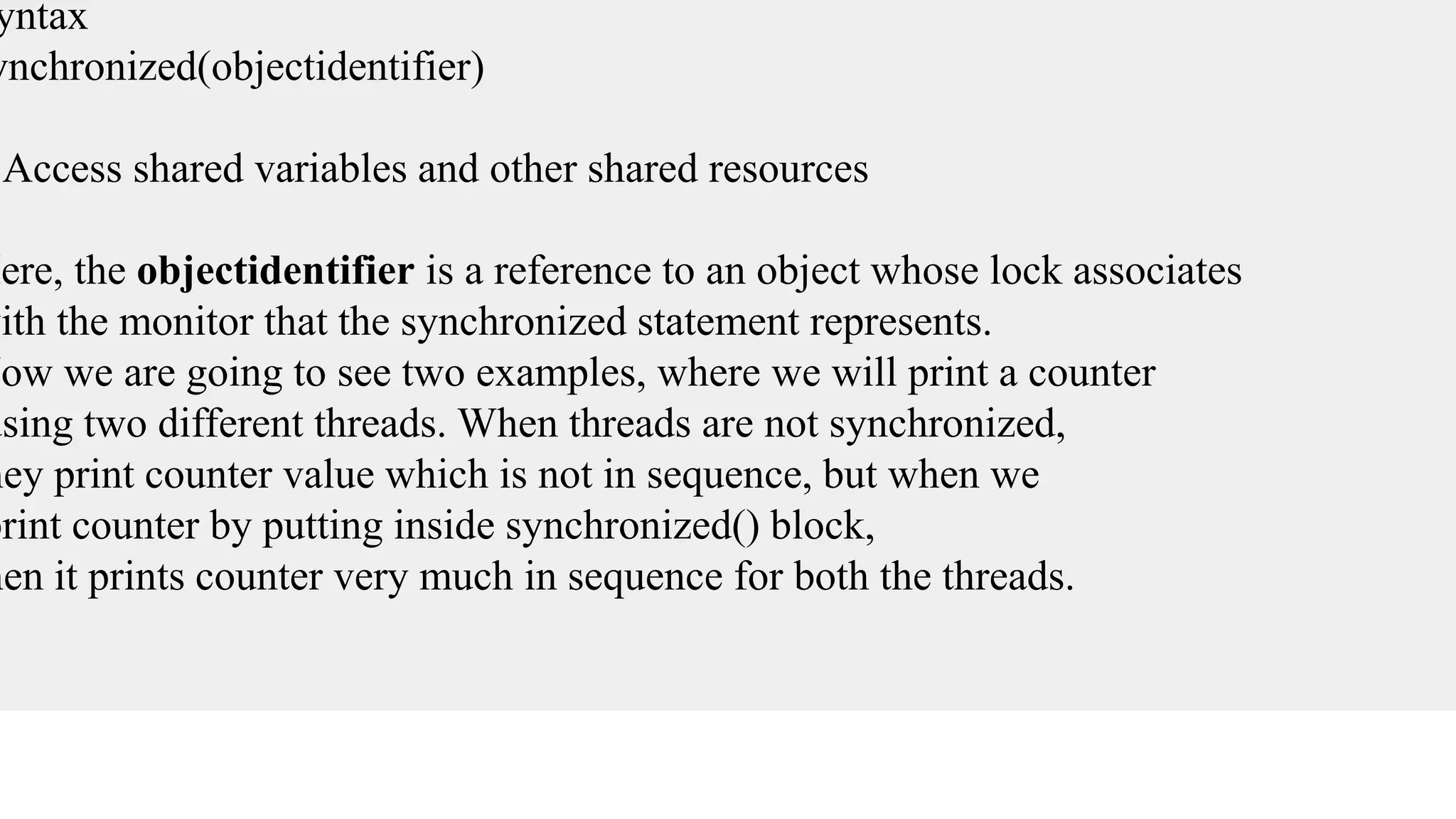Java allows multithreading which means multiple tasks can run concurrently within a single program. A thread goes through different states in its lifecycle from being born to running to termination. Threads can be created by implementing the Runnable interface and overriding the run method. The run method contains the task being performed by the thread. Synchronization is needed when multiple threads access shared resources to prevent race conditions and ensure only one thread accesses the resource at a time.
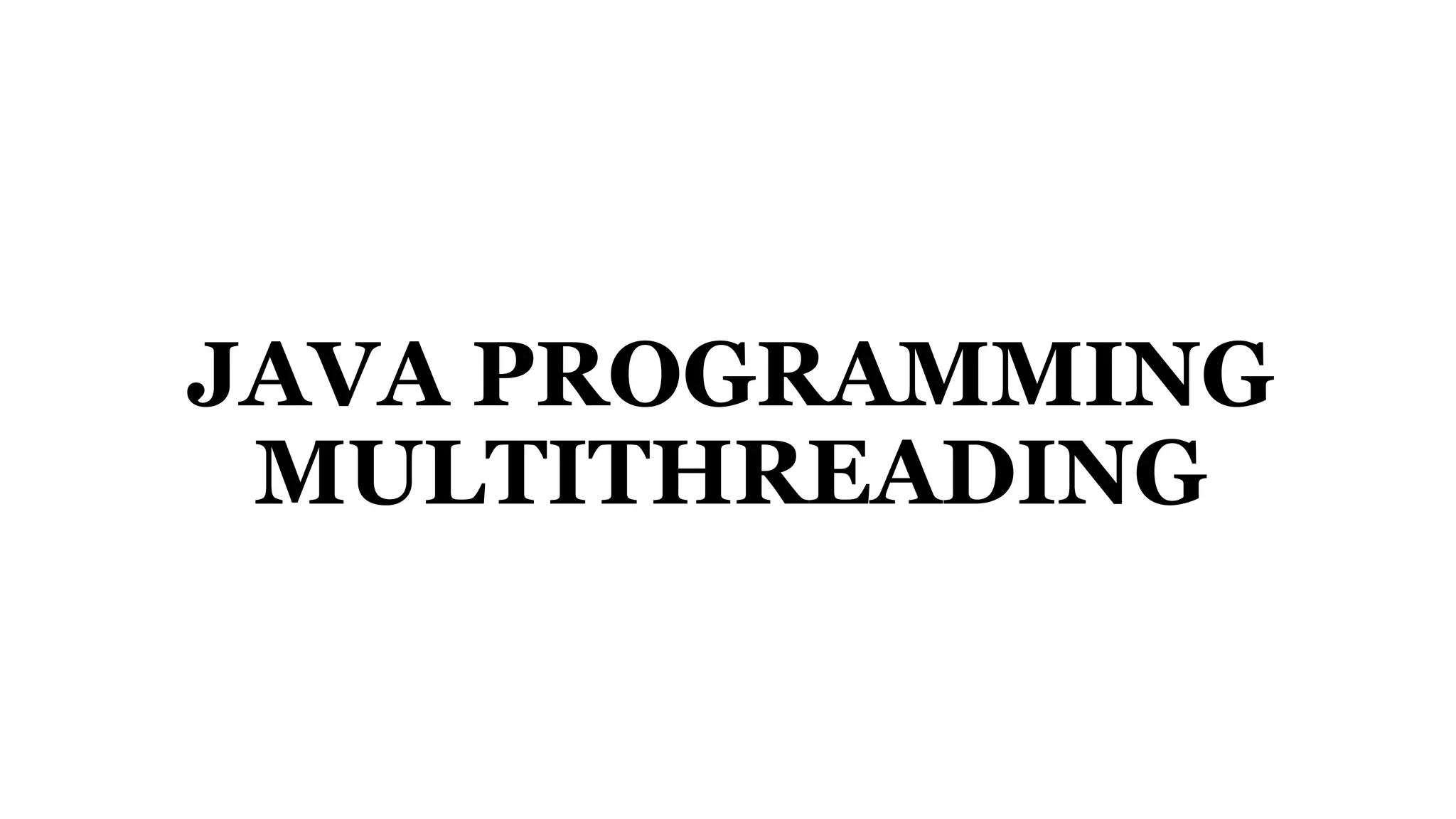
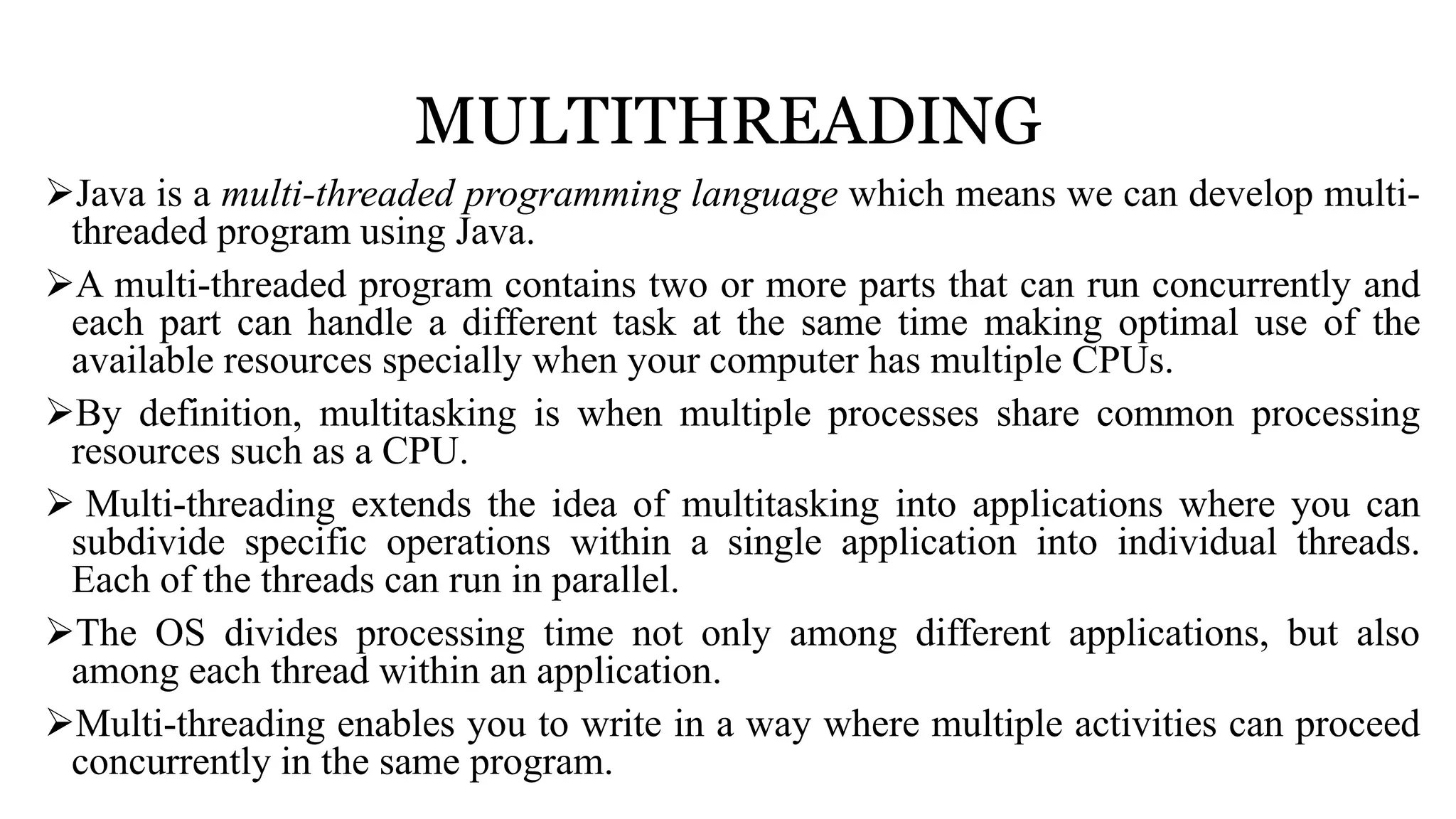
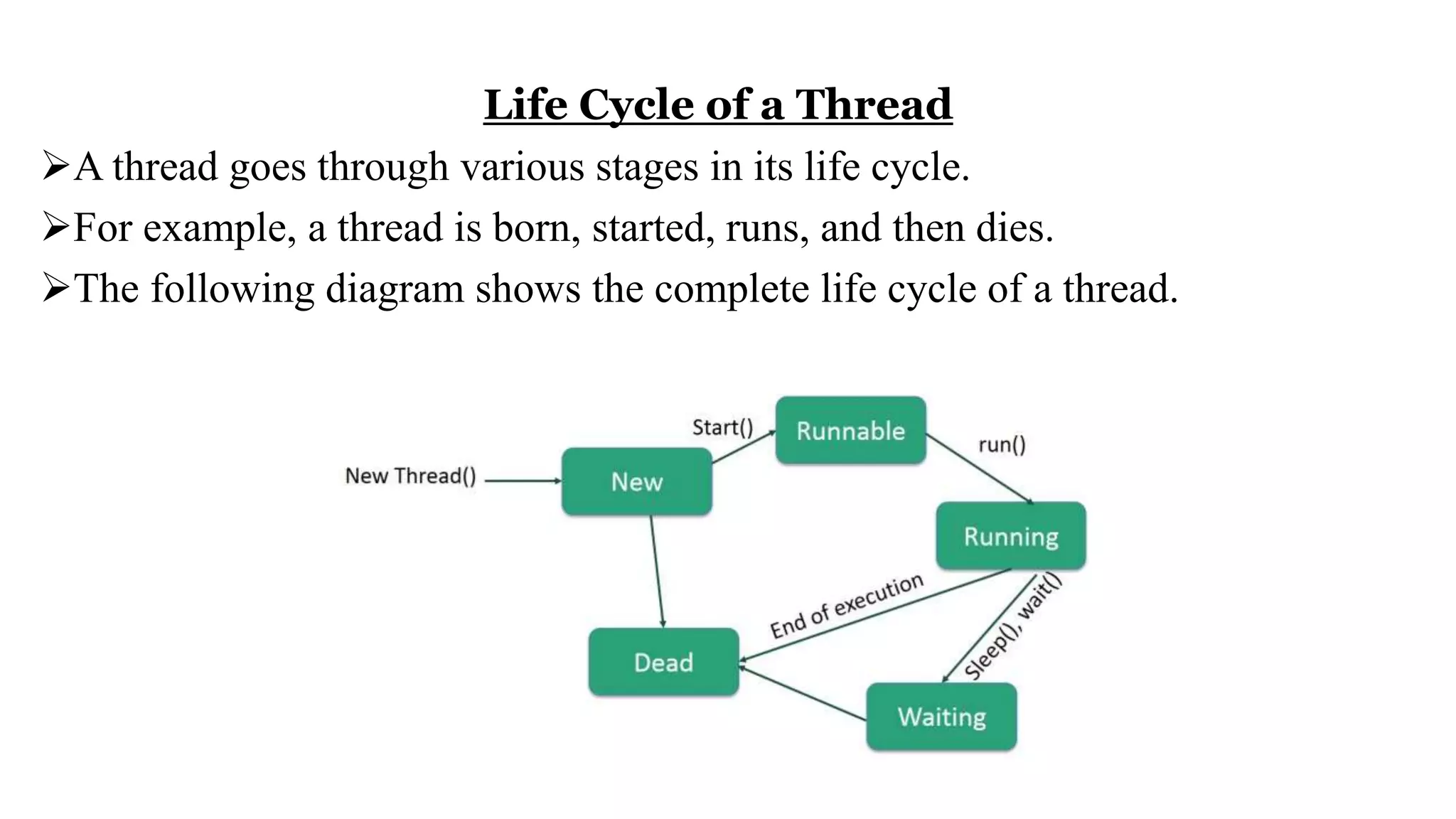
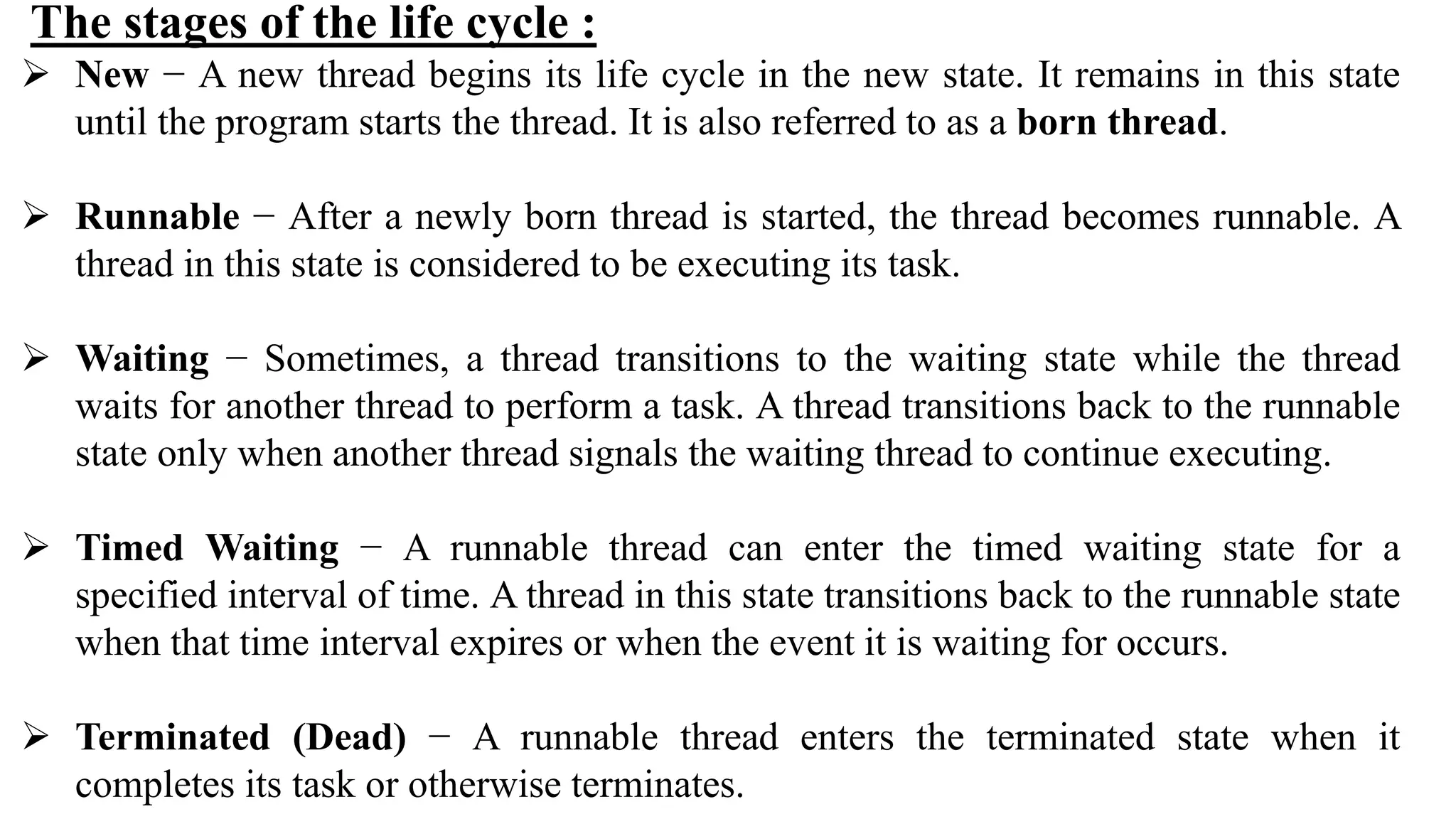
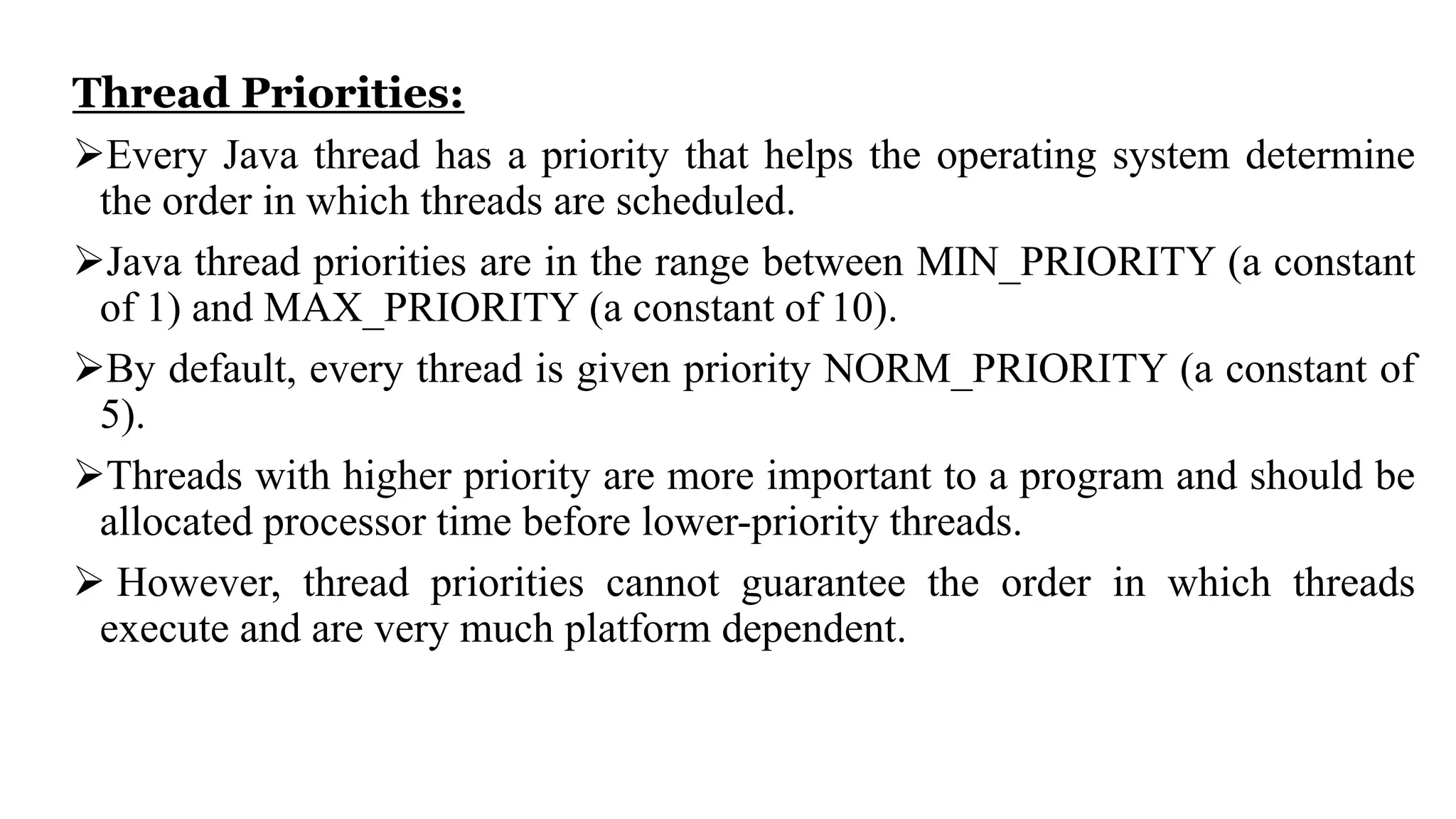
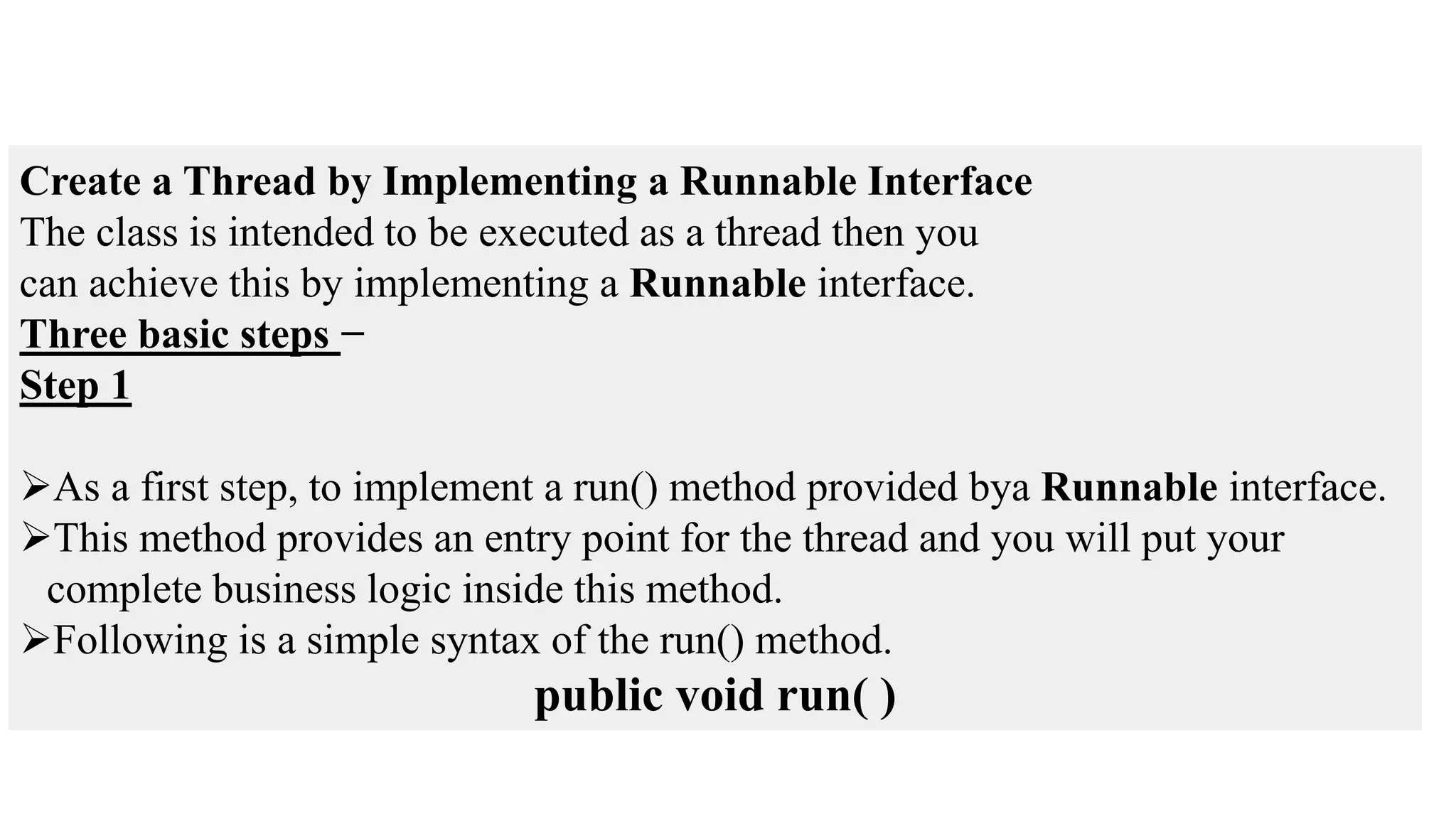
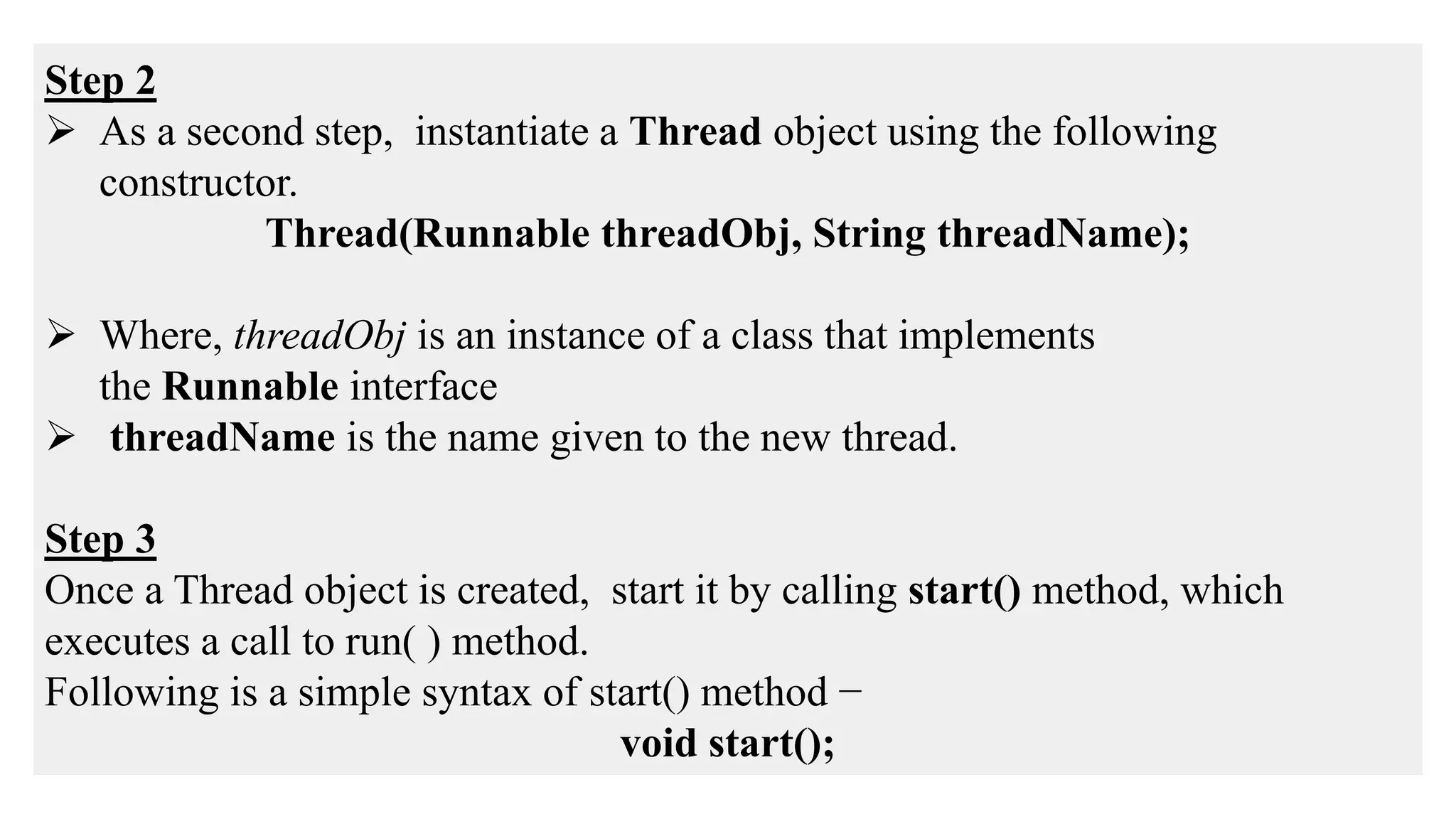
![EXAMPLE:
class Multi extends Thread
{
public void run()
{
System.out.println("thread is running...");
}
public static void main(String args[])
{
Multi t1=new Multi();
t1.start();
}
}
Output:
thread is running...](https://image.slidesharecdn.com/multithreadinginjava-220205100528/75/Multithreading-in-java-8-2048.jpg)
![public class Main implements Runnable
{
public static void main(String args[])
{
Main obj = new Main();
Thread thread = new Thread(obj);
thread.start();
System.out.println("This code is outside of the
thread");
}
public void run()
{
System.out.println("This code is running in a
thread");
}
}](https://image.slidesharecdn.com/multithreadinginjava-220205100528/75/Multithreading-in-java-9-2048.jpg)
